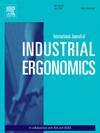Simulated interventions based on virtual reality to improve emergency evacuation under different spatial perception models
Abstract
People's emergency evacuation behavior is heavily reliant on spatial knowledge. Different spatial cognitive ways shape spatial knowledge differently. To investigate the effect of different cognitive ways on people's wayfinding performance in an indoor fire situation. The study used a virtual reality simulation of a shopping mall environment, and 128 participants were recruited for the experiment. The experiment divided the participants into six groups and placed them in two scenarios, one with and one without fire. This study also explored two other intervention behaviors to improve the participants' evacuation behaviors. The results showed that participants who used navigation had shorter walking distances and wayfinding times than those who used the You are here (YAH) map. Secondly, participants in the fire scenario walked longer distances and took longer to evacuate than those in the no-fire scenario, and they perceived successful evacuation to be more difficult. Thirdly, the intervention behavior effectively improved the participants' evacuation behavior and increased the efficiency of the evacuation. The leader's intervention was more effective in helping participants evacuate than the range intervention in this experimental setting. The findings may advance the understanding of human evacuation behavior and provide important practical implications for people's safety and emergency preparedness in shopping malls.

 求助内容:
求助内容: 应助结果提醒方式:
应助结果提醒方式:


